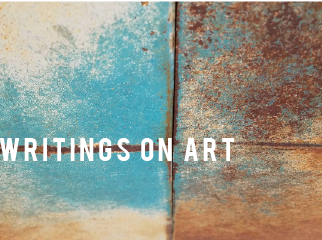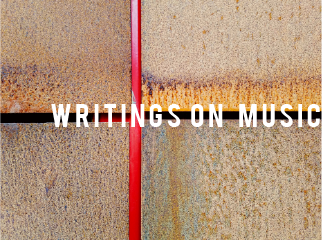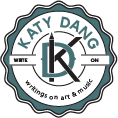Paul Hosefros
“Worth A Thousand Words: The world through the eyes of photojournalist Paul Hosefros”
By Katy Dang
Boise Weekly | September 5, 2007
https://www.boiseweekly.com/boise/worth-a-thousand-words/Content?oid=933678
Paul Hosefros is a photojournalist whose work with The New York Times has captured some of the most newsworthy events from the 1970s to the present. The images he has taken have made their way into the collective consciousness of our society and have helped to define the moments in time when news breaks and history is made. His work has covered international news, as well as the national state of affairs. Through it all, Hosefros has had a hand in how we view the world, and his work tells the story of our time.

Hosefros moved to Boise after retiring from his job as a senior photographer for the Times Washington Bureau in 2004. He still does freelance work for the paper, and his business card identifies him as New York Times, Emeritus. “I spent all of my adult life responding to fire, plague and pestilence,” says Hosefros, 60. “My concentration was always on the events of other people’s lives.” His emphasis now is on his own life, one that he shares with his wife, Gaye Bennett Hosefros, a vice president at United Way of the Treasure Valley, and their son Brian, who is a sophomore at Albertson College of Idaho majoring in music composition. Hosefros’ current projects include creating a photographic documentation of the Idaho State Capitol renovation and piloting his plane in and around Idaho. He also earned his MFA from Boise State in spring 2007 but not in photography. His degree is in creative writing.
The written word has played a significant role in Hosefros’ life. He was an English major at New York University. He graduated in 1969 and went to work for the Times after a stint at the Herald Tribune, fully intending to be a reporter. He found out he had to work his way up.

Paul Hosefros/The New York Times
It wasn’t easy to move from being a copyboy to a staff writer at the Times. Those were the years of white shirts and ties in the newsroom, when cigar smoke filled the air and reporters retired to Gough’s Bar off Times Square after work. A character straight out of Gaye Talese’s The Kingdom and the Power gave Hosefros a way to advance. “It was Sammy Solovitz who said to me, ‘Hey kid, wanna get promoted? Work in the picture desk!’ I did, and so I did. I wanted to be a journalist, and photography was a convenient way in,” explains Hosefros.
While it wasn’t what he had expected, he threw himself into his role. It remained in the back of his head that he would someday return to writing, but in the meantime, his grasp of narrative and ability to analyze a story would influence the way he approached photography and came to define his style as a photojournalist.
“Taking pictures for me was a subterfuge until I could get back in the newsroom,” says Hosefros, “but I began to see the appeal of being a photographer, because you actually have to be there to see what is happening. It’s not the same as being a reporter, where you can interview someone about it afterwards. But first I had to learn how to operate a camera.” Luckily for Hosefros, he was in the midst of incredible talent. “I learned from the best photographers in the business,” he says. “I was surrounded by drop-dead great photographers. There was Ernie Sisto, whose advice was, ‘F8 and be there.’ There was also Bill Sauro and Neil Boenzi at the Times, and Harry Hamburg from the Daily News. I was able to have some of the all-time best eyes in the business going over my photos with me from the very beginning. I recognized, even as a kid, that I had it good.” John Morris was the photo editor at the Times, and it was his friend, Henri Cartier-Bresson, who inspired Hosefros to understand how to create a sense of meaning in his pictures. “Bresson came as a guest for dinner,” says Hosefros. “I read his essay ‘The Decisive Moment’ in preparation for meeting him. My mentor, John Morris, introduced us, and that moment had a profound impact on me. Here was a man who put so much meaning into his pictures, who had a way of looking and intuitively knowing what moment is the moment to get the shot. His influence is very recognizable in my pictures.”

Paul Hosefros/Lemley International
As a young photographer, Hosefros had to pay his dues, but luck also had a hand in his success. “That’s the thing with photography and news; you’ve got to be there,” explains Hosefros. His big break came as a fluke; the classic situation of being in the right place at the right time and getting the shot. As Hosefros tells the story, “There was a beat called the BQLI that nobody wanted: Brooklyn-Queens-Long Island. None of the staffers ever wanted to go out there, but I was eager to go anywhere,” he recalls. “It was very much, ‘Put me in, coach!’ I went out on an assignment to Bedford-Stuyvesant in the early 1970s. New York was quite tumultuous during that time. The reporter that I was with and I were riding on the train to Brooklyn, and there was no one else on the train. It was completely empty. It would stop at the stops, and no one would get on. We went and did our assignment, and as were leaving, there were fire trucks rushing by. We walked two blocks and turned a corner. I looked over at the reporter, and he was gone; he had just taken off. It turned out there was a full-scale riot going on. Photographically, that was my first big break; it was my first page-one picture.”
Hosefros continued as a staff photographer at the Times and was assistant picture editor from 1980 to 1983, when he moved to the Washington, D.C., bureau as the senior photographer. While there, he captured many iconographic shots of Nixon, Reagan, Bush and Clinton. He covered the visits of Mikhail Gorbachev, Yassir Arafat, Nelson Mandela and Queen Elizabeth.
“When I moved to the Washington bureau, everything began to fall into place,” he says. “The emphasis was on politics, which had always been where my interests lay. The bureau was unique and the best of all possible worlds, and the photographers were really able to take charge of their own vision.”
Hosefros worked closely with George Tames, who was his mentor and best friend. Tames was a well-known photographer of the Washington political scene. Over the course of his career, which began in the 1940s, Tames developed a style of political photojournalism as an art. His pictures have an artistic element that goes beyond the standard portraiture; there is a certain grace to them. They show background, which allows the shot to have a sense of place.
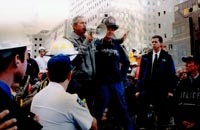
Paul Hosefros/The New York Times
There is an intimacy with their subjects that both Tames and Hosefros worked hard to achieve. “As a photographer, if you played your cards right, you could get a lot farther than if you didn’t put any effort in,” says Hosefros. “George Tames and I always wore a suit and tie. You had to know how to talk the lingo and how to work with the Secret Service, and it always helped if you knew who is doing what to whom.”
“Paul Hosefros is a photographer who learned from the best: George Tames,” says Pulitzer Prize-winning photographer Stephen Crowley, who worked with Hosefros at the Washington bureau. “I would say that Paul was a student of George Tames, and I was a student of Paul Hosefros.
“We worked together for 15 years and were arch competitors for five years before that, when I worked for another paper,” says Crowley. “I remember during the Clarence Thomas hearings, all the photographers were in the well shooting close-ups. I was outside when a group of women Representatives from the House started climbing up the stairs to the Senate. No one else was out there, and I thought I had this great scoop. Then I looked up, and Paul Hosefros was above me getting an aerial shot. He’s the one who got the shot: it crushed me. He outsmarted not only me, but all the other photographers.
“He’s the smartest news photographer in a town that has seen hundreds of photographers,” says Crowley.
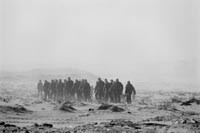
Paul Hosefros/The New York Times
During his years at the New York Times, Hosefros had the opportunity to pass his knowledge along to other photographers. When Fred Conrad began his career at the Times in 1973, Hosefros was already established at the photo desk. Conrad recalls working on a particular news story with Hosefros. “1977 was my first year as a staff photographer, and it was the Summer of Sam,” says Conrad. “Paul and I were both working when the arrest of Mr. Berkowitz was made, and we rushed to police headquarters to get the picture. I was really frustrated because Paul is the one who got the picture; he knew where to stand and what lens to bring; he just knew. But he was very generous with his knowledge and was willing to give some advice to a rookie. He would say, ‘This is how to do this in certain situations, and this is what to look for.’ He told me to look for the less obvious. He taught me to always be aware of where you are and to look for all of the possibilities, especially ones that might not be obvious.
“I worked through that night as a runner,” says Conrad. “Word came that Mr. Berkowitz was going to be arraigned in Brooklyn, so I rushed down there. They brought him in a completely different way from where all of the other photographers were waiting for him. They walked him through with the handcuffs on and locked the precinct doors behind them, but I was already inside. I remembered Paul’s advice and was already where I needed to be. So Paul got page one the first day, and I got page one the next day.”
Hosefros also has a different way of looking at his subject, one that is informed by his commitment to telling a story with his pictures. Hosefros says that while most photo opportunities in Washington are staged affairs, with a designated place for the press to stand, he learned to move away from the crowd and look for a different shot of the proceedings.
“He’s never with the mob,” says Crowley. “The nature of political photography is to fight your way to the center of the velvet rope, but that wasn’t Paul’s approach. He’d always be off to the side.”
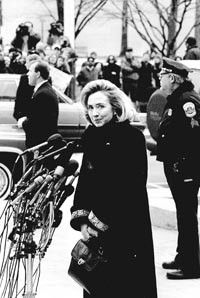
Paul Hosefros/The New York Times
Lonnie Schlein was the national picture editor of the Timesfrom 1992 to 2001. “Paul is the quintessential Washington news photographer,” he says. “Very few photographers can get through to people and establish relationships with the people behind the scenes the way that Paul could. There are plenty of average photographers there, who can give you a predictable shot. Paul had the ability to surprise readers with a picture that they wouldn’t expect. The New York Times editors and readers expect to see that special moment. Paul is an all-around great photographer with an ability to see beneath the political process.”
“I had a reputation of being a left fielder,” says Hosefros. “I was often off to the side, looking for something else. I always went for something that would reveal what was going on, really.” Knowing the background of the story gave Hosefros the ability to read the situation and approach the shot differently. His interest in politics and understanding of history often gave him a different perspective on the proceedings he was capturing.
Other photographers were impressed with his approach. “There’s a real risk in being in left field, because you risk not getting the shot,” says Conrad, who was Hosefros’ colleague for 30 years. “But when Paul did it, it was a risk being taken by somebody who had the knowledge of the situation and who knew he could pull it off. He would bring to it a greater knowledge of what and who he was photographing. He had a keen eye for history and for the personality of the politicians.”
Hosefros is well aware of his way of looking at things and presenting them through the camera lens. Like Tames before him, he puts great thought into his images and has the understanding that comes from years of experience. “I enjoy not having to shoot the expected,” says Hosefros. “In a news photograph, everything depends on the situation. I’m always interested in what is going on in the background.
“Close up tends to lose context,” explains Hosefros. “The fun of photography is saying more; it lets parts indicate the whole. You have to let the metaphor speak. You have to think about what you’re doing, and constantly ask yourself, ‘What does this mean?'”
There is an intellectual component that connects the photographer to the audience as well. “Too often people are not encouraged to match up what they see with what they know,” he says. “My thing is to find metaphor or meaning. I credit my eye with my liberal arts education. I have an interest in words, an interest in the story.”
His colleagues appreciate his approach to capturing an image. “He’s established a nuanced eye for looking at things differently,” says Conrad. This approach can be exemplified by one of Hosefros’ early pictures, taken on 101st Street in Harlem in 1975. “He’s well-known for the photo of the fire,” says Conrad. “Fires happen all the time in New York, but his approach was to put the kids in the playground in the forefront. He put the focus on them. It’s an incredible photo.”
Hosefros remembers the circumstances under which he took that famous shot. He had been tasked up to East Harlem to copy a mug shot. As he was leaving the precinct, he saw the flames licking out of the building. He knew he had to get the shot, but his eye was drawn to the kids in the yard. Clearly, they were aware that there was a building on fire, but it didn’t affect them. They just kept right on playing. He managed to capture the juxtaposition of ordinary life and an extraordinary event. The shot fixes the place in time while being timeless; it is a specific place, but it could also be anywhere. There is a sort of universality to the picture that has given it a life of its own and made it a lasting image.
“When he moved from New York to Washington, he brought with him a certain appreciation and skill for seeing the world differently,” says Conrad. The Washington, D.C., political scene could be glamorous, and as a news photographer, Hosefros rubbed elbows with the most powerful people in the world. “In Washington, I tended to be cautious,” says Hosefros. “There is an urge to get close to these powerful people and to be considered a friend, but I saw too many times how that could be difficult. You never know when you will have to photograph them under the worst circumstances.”
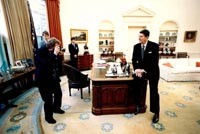
Paul Hosefros/The New York Times
Photojournalists can be privy to the inner workings of the political machine and can often see inside the maneuverings. “As far as honesty is concerned, you got to the point where you could tell when the intensity was revved up,” he explains. “It’s not that we, as photographers, were particularly prescient, but a photographer has to be able to read body language in its essence. You have to be able to equate known movements to comprehend what you have just seen.”
Hosefros seems to know, inherently, where the picture is and how to get it. In order to delve deeper into the subject, Hosefros says, he sees certain elements as crucial and universal cues to read. “The photographer’s vocabulary is nothing without the thorough understanding of body language,” he says. “Once you account for cultural differences, there is a core of body language to be understood. We need to use everything, to pick up on every clue. You have to know what is going on, especially visually. You have to be aware of what people do versus what people say.”
Being able to combine the back story with the moment also fascinates Hosefros. “You know it when you see it,” he says. “After a while, you know when you’re beholding history or not. When you’re shooting, something kicks in, and you know ‘This is good. This is really good.'”
Hosefros is not overly concerned with the gadgetry and technical aspects of photography, and generally shoots full frame in the camera. “I’ve always used a small Leica, and I have an uneasy truce with computers,” he explains. “I always look for meaning over the technical aspects.” He has often found that while the other photographers are focusing in with giant lenses, the overall picture is being lost and robbed of its context.
“I infuriate a number of photographers because I say that sharpness is overrated,” he says. “Fuzzy pictures can have all the world of meaning: Look at the shot of Tiananmen Square.” A tour through the Pulitzer Prize-winning photographs supports this: It is the moment captured and the story that it tells, that produces impact. “If you notice, pictures of the news are always just before or just after the moment that something happens,” he says. “You always try to get closest to the moment that the news is actually happening. That’s what makes the Pulitzers so great: they are of the exact moment that the news is being made.” Hosefros has been nominated for the Pulitzer Prize twice: once for the Clinton impeachment hearings and once for his 1988 presidential campaign coverage.
His years of experience have allowed Hosefros to have a trained eye, one that is refined from being under the tutelage of others in addition to years of on-the-job experience. “The question is what you bring to it,” he says. “What you leave in is as important as what you leave out, and what matters is how you arrange it. The whole process of taking a picture is about editing. The eye knows where to look, intuitively; it tends to follow the light. The light shows you where to look.”
There is also the presence of the audience and what the viewer will bring to the experience. “That’s the thing about having a photograph published,” he continues. “You have to make it as good as you can because then it leaves your hands and takes on a life of its own. That is the joy of it: By being published, the photo gets to live that life beyond what you brought to it. There is a life of meaning that a viewer lets it have; it triggers meanings and emotions for everyone who looks at it.” There is power in the visual transmission of an idea from one individual to another; it is a language all its own, not constrained by words or limited by explanation.
“The photographers who get it also have a deeper appreciation, and that shows in their photos,” says Hosefros. “They can take the certain organic rhythms that make up our lives and give it form, give it substance, give it meaning. It can enhance our memory of what it is to be human.”

Paul Hosefros/The New York Times
“I would always be pleased when I looked through the paper and would find one of Hosefros’ photographs, because I always knew that there was a lot of thought put into it,” says Conrad. “As a photographer, I appreciate that.”
Hosefros decided to leave Washington shortly after the events of September 11, 2001. “The road that I took to get to work went right by the Pentagon, so I was there 10 minutes after the plane hit,” he recalls. “The only Washington picture on page one the next day was mine. From that minute on, it was all day every day. It was nonstop. Then there was the anthrax scare, and I actually had to get treated with Cipro, so it went from being nonstop to being 24/7. Then we had the sniper, so it became 24/7 with chaos.
“Finally came Iraq, and by then, the aftermath of 9/11 had really crystallized my thinking. I decided to retire.
“At that time, I’d had 36 years. I began to re-examine my life, and to take charge of my own time,” says Hosefros. “The work sounds glamorous, and from time to time it is: One day, you meet the Queen of England, and the next day you meet Idi Amin. But I think that most of the men and women in the profession these days realize that there’s a toll. If you can do it and still keep a sense of who you are, then you’ve really accomplished something impressive.”
Hosefros hasn’t let retirement slow him down in the least. “I’m busier now than I was when I was working,” he says. He has rediscovered a love for photography that transcends photojournalism. “There’s a difference between this photography thing and journalism or news,” he says. “I have a renewed sense of freedom to look and to respond, as opposed to being aware of my audience. My newer pictures have allowed me to see again.”
While following his first love—writing—in the Master’s Program in Creative Writing at Boise State, Hosefros submitted some of his recent photographs to the literary journal cold-drill. He was stunned by the presentation that they were given in the book, and it stands as some of his favorite work to date.
Hosefros sees his writing as an extension of the narrative expression that he brought to his photographs. He credits Professor Bruce Ballinger at Boise State with helping him to make the shift from images to words, a transition that has expanded the vocabulary with which he communicates the way he sees the world.
In addition, he is lending his considerable talents to documenting the Capitol Renovation project, which is being headed by Lemley International. “In a moment of brilliance, Jack Lemley wanted to get a photographer in there before the first bulldozer and have them there for the duration,” Hosefros explains. “He and I had a three and a half hour meeting. I credit him for being a real visionary; his projects, including the Chunnel, have been impressive. What we hammered out is that these are not to be progress pictures. We are trying to tell a story. We are looking at the people who inhabit this project and what they do. I am deliberately taking head shots, going in very tight and then shooting the job that they do. It is showing the person and the purpose in the context of the Capitol itself. It’s more than journalistic; it is documentarian, with an eye less to the stuff than to the people.
“It is my way of giving Idaho something that they wouldn’t otherwise have; they will have a lasting archive, for the generations,” says Hosefros.
Hosefros appreciates his new surroundings. “The quality of my experience here has everything to do with the people that I’ve encountered in Boise,” he says. “There is a wonderful arts community here, with fabulous people doing things that are quite remarkable.” In addition to teaching workshops on photojournalism, Hosefros is also enjoying his other love—flying. “You haven’t seen anything until you’ve seen the Sawtooth Mountains up close, with only a windshield between you and them,” he says. “It’s incredible.”
Hosefros intends to continue to depict the world through his writing and to never cease trying to capture moments of meaning through a camera lens. There are always more stories to be told, and Hosefros has just the nuanced eye to tell them.

